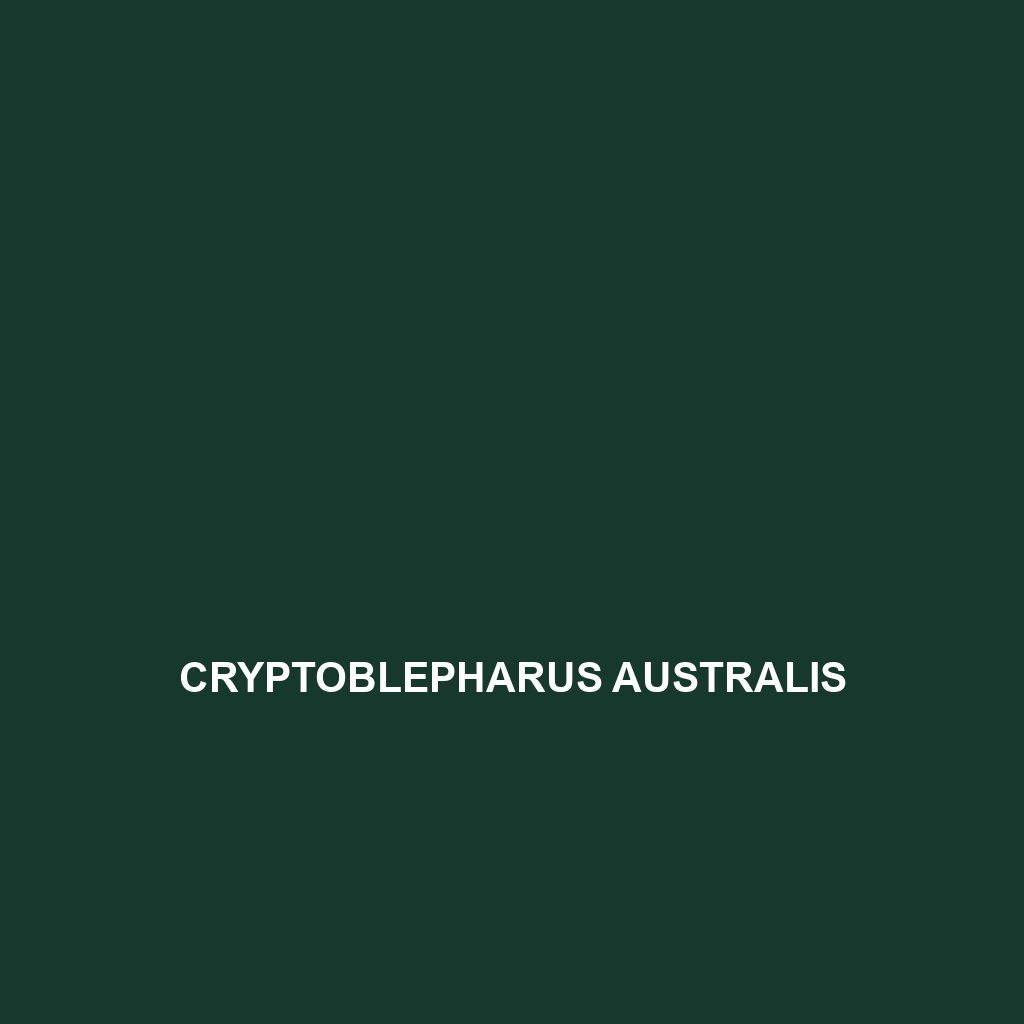Species Description: Cryptoblepharus australis
Common Name: Cryptoblepharus australis
Scientific Name: Cryptoblepharus australis
Habitat
The Cryptoblepharus australis, commonly referred to as the Australian slender-skink, is primarily found in the coastal regions of Australia. This species thrives in various habitats, including sandy beaches, coastal dunes, and open forests. It prefers areas with ample vegetation cover for shelter and is often spotted basking on tree trunks or rocky surfaces in its natural environment.
Physical Characteristics
This species typically measures between 10 to 15 cm in length. The Australian slender-skink displays a slender body shape with a smooth, glossy appearance. Its coloration ranges from light brown to grey with dark stripes along the sides, providing excellent camouflage against the sandy or rocky environments. Notably, it has large, round eyes and distinctively long toes that assist in climbing and movement through its habitat.
Behavior
Cryptoblepharus australis is diurnal, meaning it is active during the day. This species exhibits a range of typical behaviors, including basking in the sun to regulate body temperature and foraging for food. It is known for its swift movements, often fleeing at the sight of potential predators. Additionally, the Australian slender-skink utilizes its climbing abilities to escape threats and find food.
Diet
The diet of Cryptoblepharus australis primarily consists of small invertebrates, including insects and spiders. Its feeding habits highlight an important role in controlling insect populations within its habitat. This reptile forages actively, using its keen eyesight to spot prey, and often hunts on the ground or among foliage.
Reproduction
Breeding typically occurs during the warmer months, with peak activity noted from spring to early summer. Female Cryptoblepharus australis usually lay eggs in hidden nests, providing a safe environment for offspring. The eggs typically incubate for 6 to 8 weeks, with young lizards emerging fully formed and ready to fend for themselves shortly after hatching.
Conservation Status
The Australian slender-skink is currently categorized as of ‘Least Concern’ by the IUCN. Nevertheless, habitat loss and environmental changes pose potential risks. Awareness and conservation efforts are crucial in maintaining stable populations of Cryptoblepharus australis in its natural habitats.
Interesting Facts
One fascinating aspect of Cryptoblepharus australis is its ability to regenerate its tail if lost to predators. This adaptation is critical for survival, allowing it to escape while leaving part of its tail behind. Moreover, this species has been observed to communicate through a series of visual cues and body postures during mating rituals.
Role in Ecosystem
Cryptoblepharus australis plays a vital role in its ecosystem as both a predator and prey. By feeding on various insects, it helps maintain ecological balance, preventing outbreaks and supporting plant health. Additionally, it serves as a food source for larger predators, thus integrating itself into the food web of its natural habitat.
